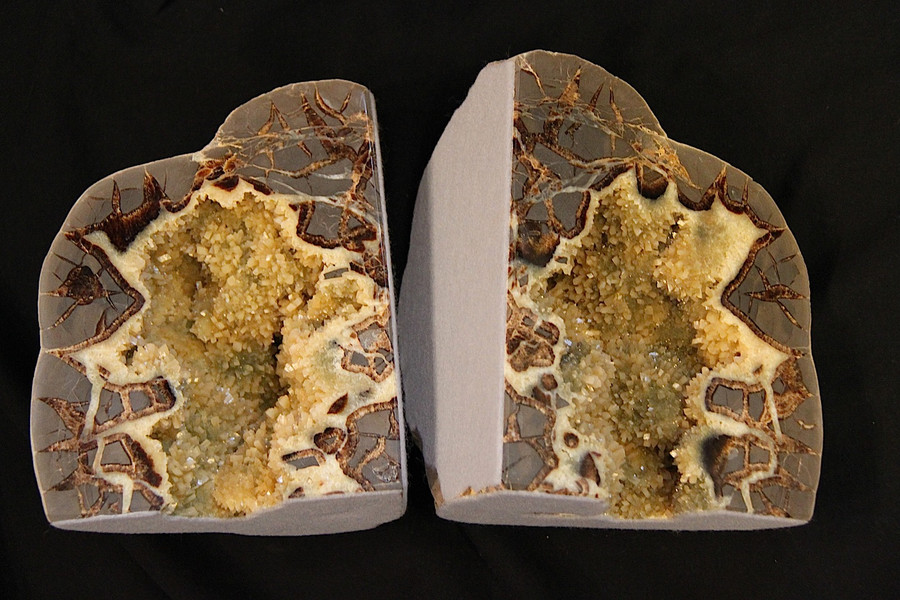HOME | DD
 quicksilver123 — Septarian Geode
quicksilver123 — Septarian Geode

Published: 2012-03-24 04:32:37 +0000 UTC; Views: 1040; Favourites: 26; Downloads: 23
Redirect to original
Description
Please DO NOT use or modify the picture IN ANY WAY without my permission. Any use of the picture without MY agreement will be treated as an act of felony and offense. Featuring this picture ANYWHERE without being addressed back to me will not be taken lightly, and will also be recognized as an act of felony and offense.This photo is copyrighted.
----------------------------------------------------
this is a septarian geode (not a nodule) from the late jurassic of utah, USA. this was found south of zion national park.
septarian nodules and geodes are formed by both dead organsims and geological movement. dead sea life in the bottom of the shore are buried in the ground as they rot. they chemically alter the surrounding mud and area around them, forming a nodule of dense material. then as the sea retreated, leaving the nodules to dry and crack in the sun, and bentonite inside the nodules shrank the nodules, creating the cracks inside. decomposed shells then seeped into the cracks, creating the calcite.
Related content
Comments: 16

Great photo, and thanks for the info on their creation.
👍: 0 ⏩: 0

this is a septarian geode (not a nodule)
I think that depends on how you define what a geode is.
Usually, for a stone to be considered a geode, it has to be (or start off as) a spherical mass which then forms a chalcedony shell.
In septarians, the outer brown "shell" is aragonite (transformed from calcite). Since septarians started off as mud balls which dried, shrank, cracked, and then later filled in with calcium carbonate (calcite/aragonite), they're probably more appropriately just called "concretions" rather than either "nodules" or "geodes".
There's a good discussion of septarians in the book Geodes: Nature's Treasures by Brad L. Cross and June Culp Zeitner. In the book they talk about a number of different types of concretions - including how septarians are formed and where/how they are mined. It makes for an interesting read.
👍: 0 ⏩: 0

That is neat! Sure would like to find something like that!
👍: 0 ⏩: 1

if you are to find one yourself... you'll need some extra help with polishing and spotting them
👍: 0 ⏩: 1

Ok, the geodes I've seen kind of looks like turtle shell on top. Is this the same case for these geodes?
👍: 0 ⏩: 1

that's likely to be a septarian web, or a septarian concretion 
👍: 0 ⏩: 1

Ok so your saying the septarian geodes, the rock part or outside of the geode is the turtle-shell like pattern??? Then what would the normal geode would look like on the outside? Or its there a website with pictures to describe on what your talking about?
👍: 0 ⏩: 1

no, there are different types of septarians. there should be a website out there talking about this
👍: 0 ⏩: 2

Oh yeah! Can you think of some websites that talk about them?
👍: 0 ⏩: 2

Wikipedia has a section about septarian concretions: [link] (wikipedia)
They're quite an interesting rock formation.
👍: 0 ⏩: 1

Those are cool! It would be very interesting to find some of those!
👍: 0 ⏩: 0

unfortunately no, but you can probably find some if you look hard. no real study has been launched on septarians and their types, so its rare to find information regarding the variety.
👍: 0 ⏩: 1

This is a gorgeous specimen. Thank you for detailing it's formation!
👍: 0 ⏩: 1
























